Creating a rock garden is like painting with nature’s own palette, where stones and plants come together to craft a living masterpiece. Whether you’re a seasoned gardener looking to diversify your landscape or a beginner eager to embrace a rewarding challenge, the art of rock gardening offers a unique opportunity to blend creativity with horticulture. This practice isn’t just about aesthetics; it’s about harnessing the rugged beauty of stones and the resilience of plants to cultivate a garden that thrives in harmony with its environment.
In this article, we’ll guide you through the essential steps to design and build your very own rock garden, sharing tips that cater to all levels of gardening expertise. You’ll discover how to select the perfect stones, choose hardy plants that flourish in rocky terrains, and implement techniques that ensure your garden is both sustainable and stunning. By the end, you’ll be equipped with the knowledge to transform a simple patch of land into a captivating rock garden that reflects your personal touch and respects the natural world.
Choosing the Perfect Site
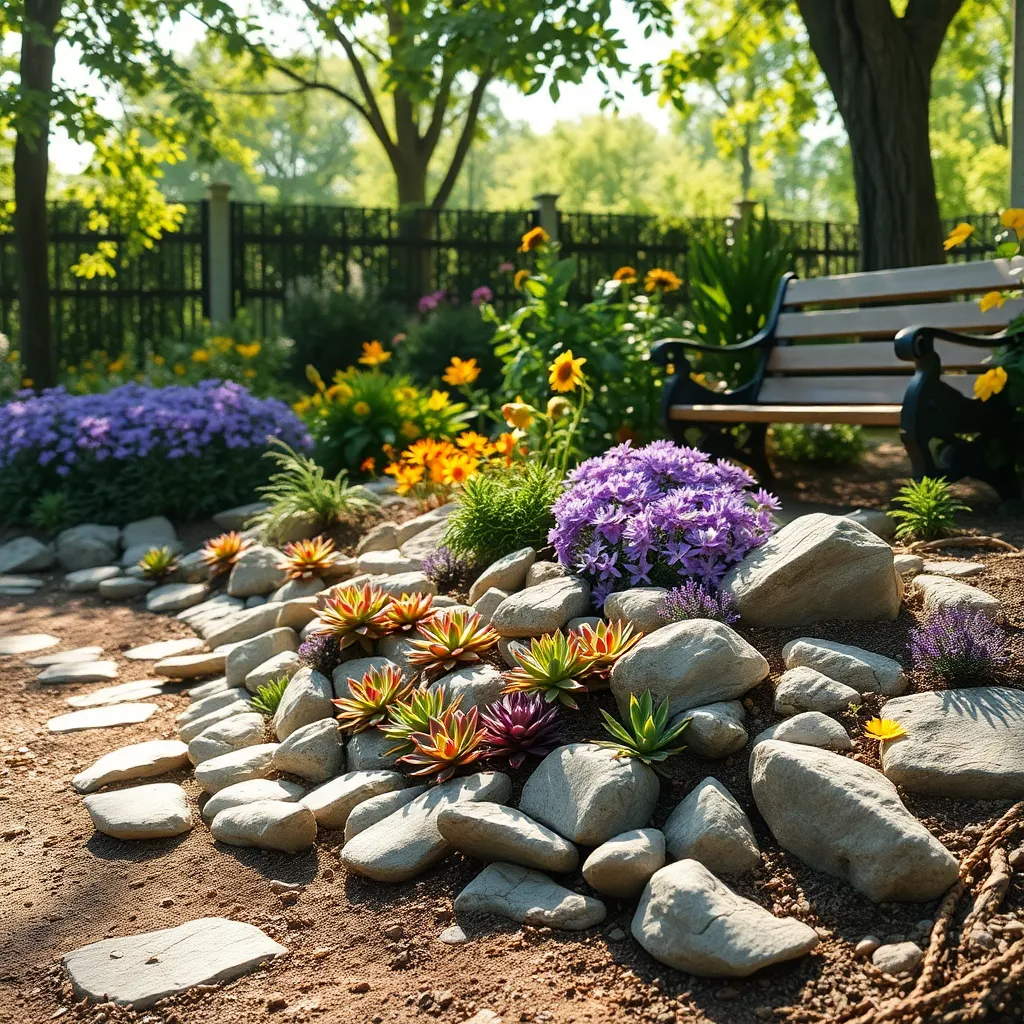
When creating a rock garden, the first step is to choose a site that receives adequate sunlight. Ideally, select a location that gets at least six hours of direct sunlight each day, as many rock garden plants thrive in these conditions.
Drainage is crucial for a successful rock garden, so avoid areas where water tends to pool. If your chosen site has poor drainage, consider building raised beds or using a gravel base to improve water flow.
Observe the existing soil composition before starting your rock garden project. Sandy or rocky soil is ideal, but if your soil is predominantly clay, amend it with coarse sand and organic matter to improve drainage and fertility.
For those with a sloped yard, take advantage of the natural incline to create a stunning rock garden that mimics a mountain landscape. This will not only enhance the aesthetic appeal but also assist in natural water runoff.
Selecting Rocks and Stones
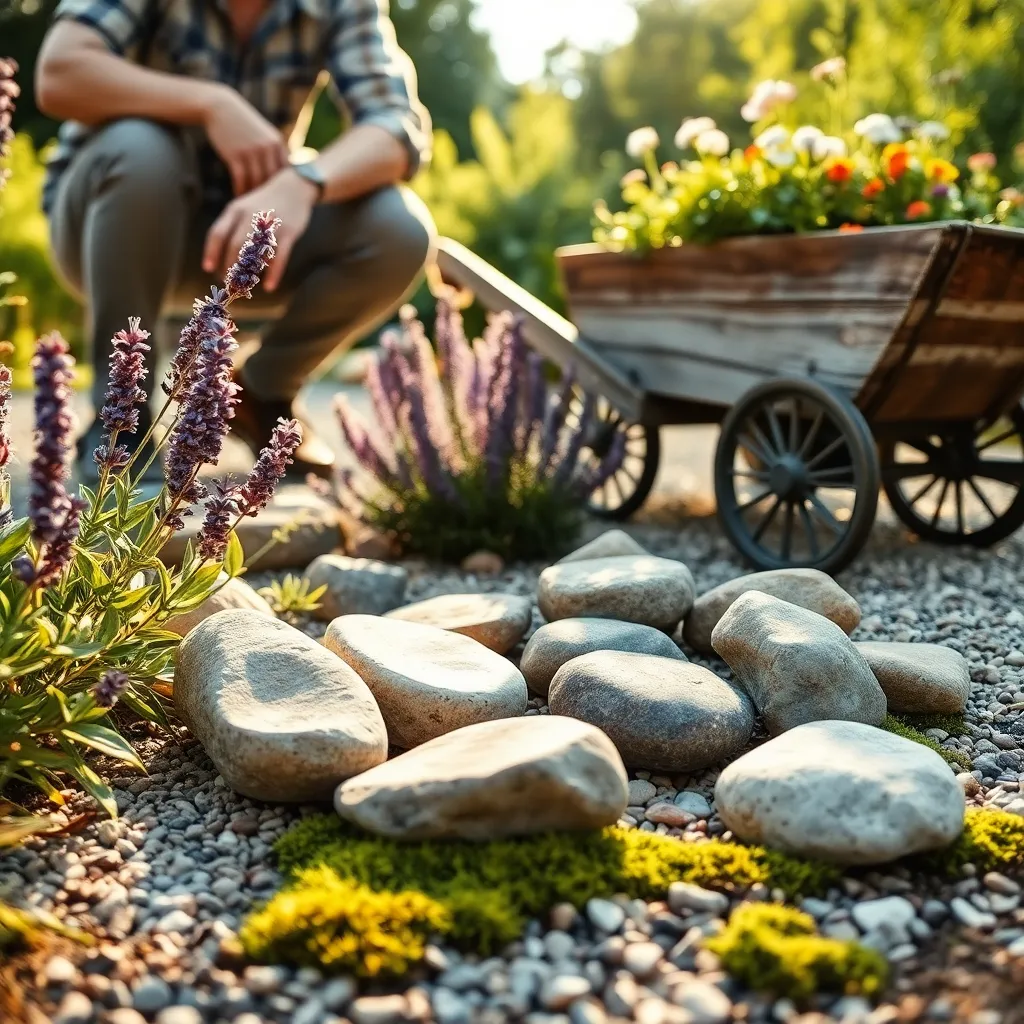
When selecting rocks and stones for your rock garden, consider their size and color to complement your landscape. Large boulders provide stability and structure, while smaller rocks can fill gaps and add detail.
Think about the type of rock that best suits your climate and soil conditions. Granite, for example, is durable and weather-resistant, making it ideal for areas with extreme weather conditions.
Focus on creating a natural look by choosing stones that mimic the appearance of naturally occurring rock formations in your area. Mixing different types of stones can enhance visual interest, but ensure they harmonize with the existing garden theme.
For beginners, start with a simple combination of two or three types of stones to avoid overwhelming the design. Experienced gardeners might experiment with more complex arrangements to create unique patterns and textures.
Designing Garden Layout
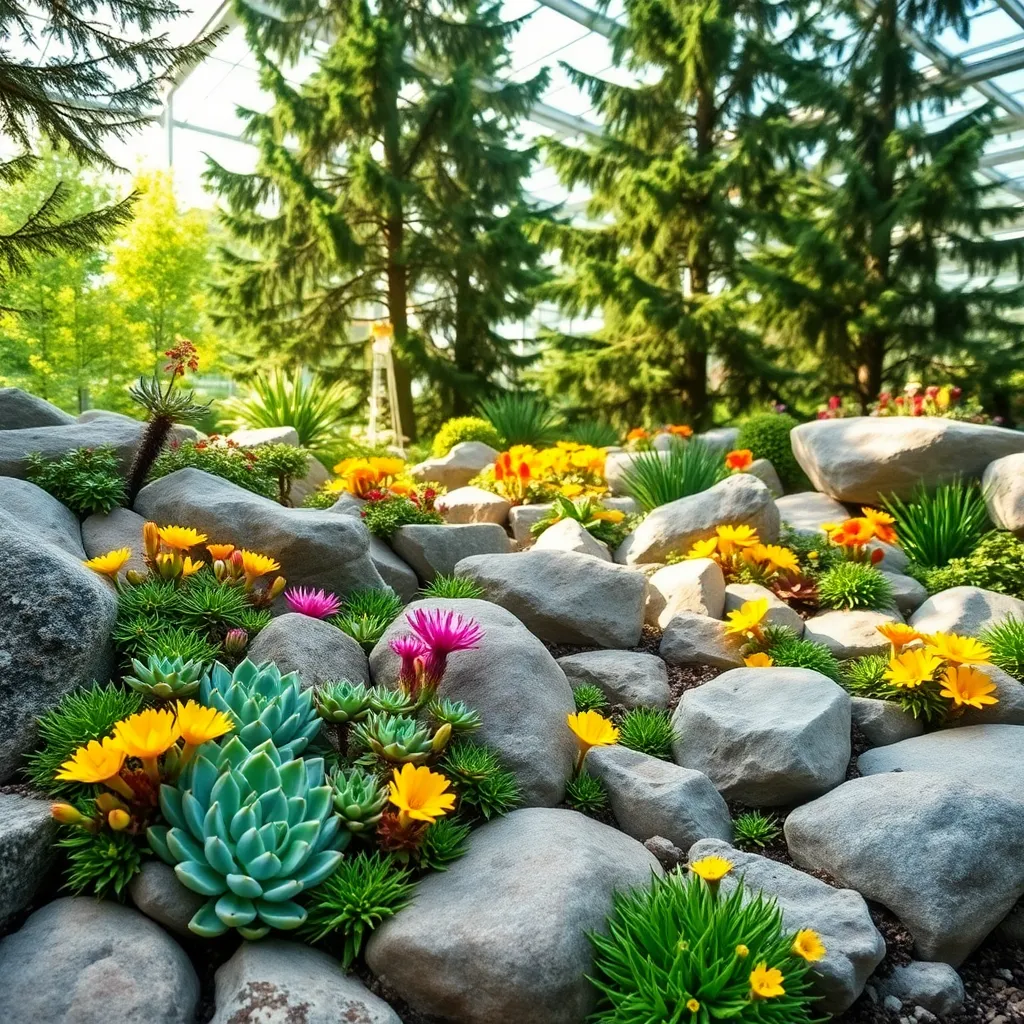
Designing a rock garden layout requires careful consideration of both aesthetic and functional elements. Begin by sketching a rough outline of your garden space, taking into account existing features such as trees or fences that may affect your design.
When planning the layout, consider the natural flow of water, as this will influence plant placement and rock positioning. Ensure you create gentle slopes to help with drainage and prevent water from pooling, which can damage plants and cause erosion.
Incorporate a mix of rock sizes to create visual interest and mimic natural landscapes. Using larger boulders as focal points, you can then intersperse smaller stones and gravel to fill gaps and create pathways.
Choose plants that thrive in rocky, well-drained conditions, such as succulents, alpines, and drought-tolerant perennials. Group plants with similar water and sunlight needs together to simplify care and maintenance.
For beginners, start with hardy plants like sedums or thyme, which are forgiving and low-maintenance. Experienced gardeners might experiment with more delicate species, such as Lewisia or Saxifraga, which require specific conditions to flourish.
Finally, consider the seasonal interest of your plants to ensure your rock garden has year-round appeal. Include a mix of evergreen and flowering varieties to maintain color and texture throughout the seasons.
Essential Tools and Materials
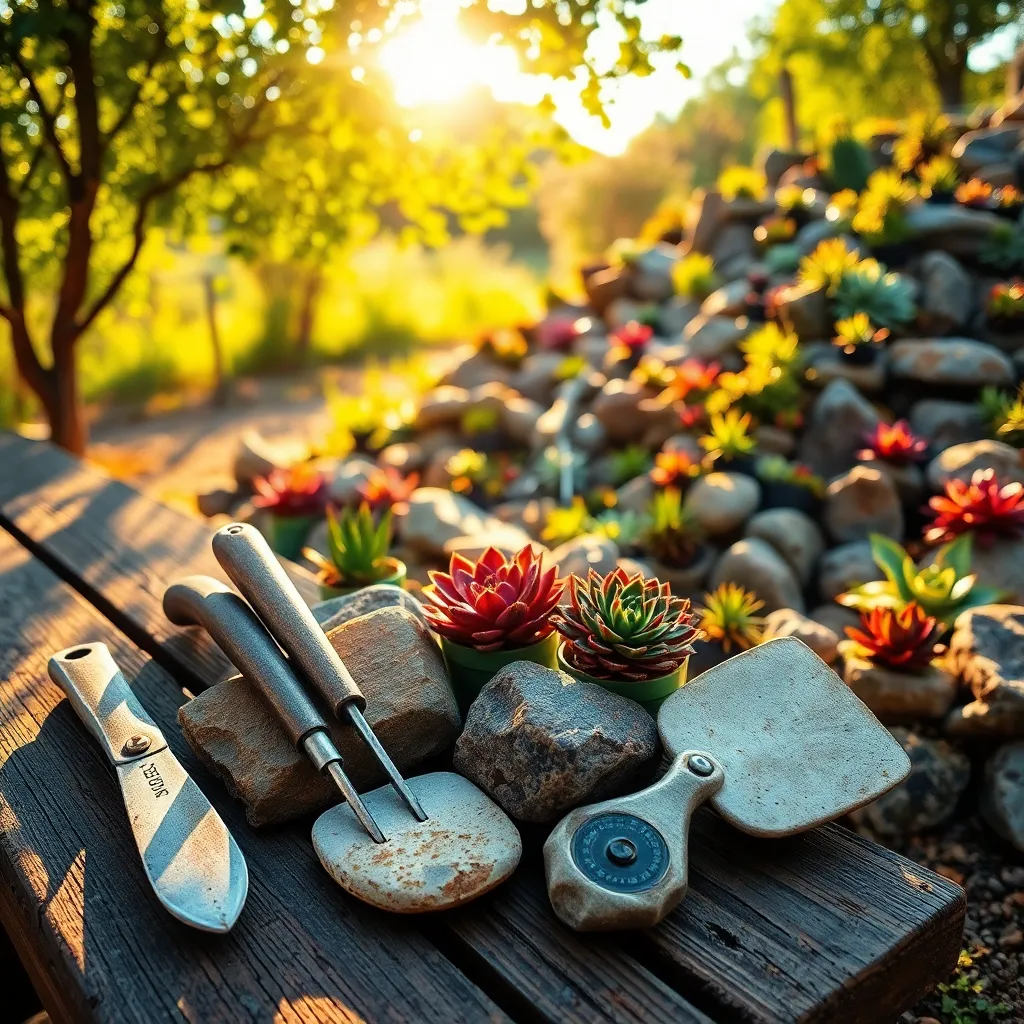
When creating a rock garden, having the right tools and materials is crucial for success. Start with a sturdy shovel and a garden trowel, as these will be essential for moving soil and positioning rocks precisely. A wheelbarrow can also be invaluable for transporting heavy materials, including rocks and soil, across your garden. Ensure all tools are maintained well to avoid any hiccups during your gardening process.
Using the appropriate soil mix is vital for a thriving rock garden. Opt for a well-draining soil, like a mix of sand, gravel, and a bit of compost, to mimic the natural conditions rock garden plants prefer. Good drainage is key to prevent root rot, especially in areas with heavy rainfall. Adjust the soil composition as needed to suit the specific plants in your rock garden, ensuring their roots have the best possible environment to thrive.
Consider investing in quality landscape fabric to help manage weeds in your rock garden. This material acts as a barrier, blocking sunlight from reaching the soil and thus helping to suppress unwanted growth. Place the fabric beneath the rocks and cut holes only where you intend to plant, ensuring your plants get the light and water they need while minimizing competition from weeds. This approach not only saves time but also enhances the aesthetic appeal of your garden.
Finally, choose the right rocks to complement your plant selection and garden design. Select rocks of varying sizes to create visual interest and a natural look. Strategically place larger stones first to establish the garden’s structure, then fill in gaps with smaller rocks and pebbles. Test the stability of each rock before planting, as this will prevent them from shifting and causing potential damage to plant roots. With the right tools and materials, your rock garden will not only be beautiful but also easy to maintain.
Preparing the Foundation Soil
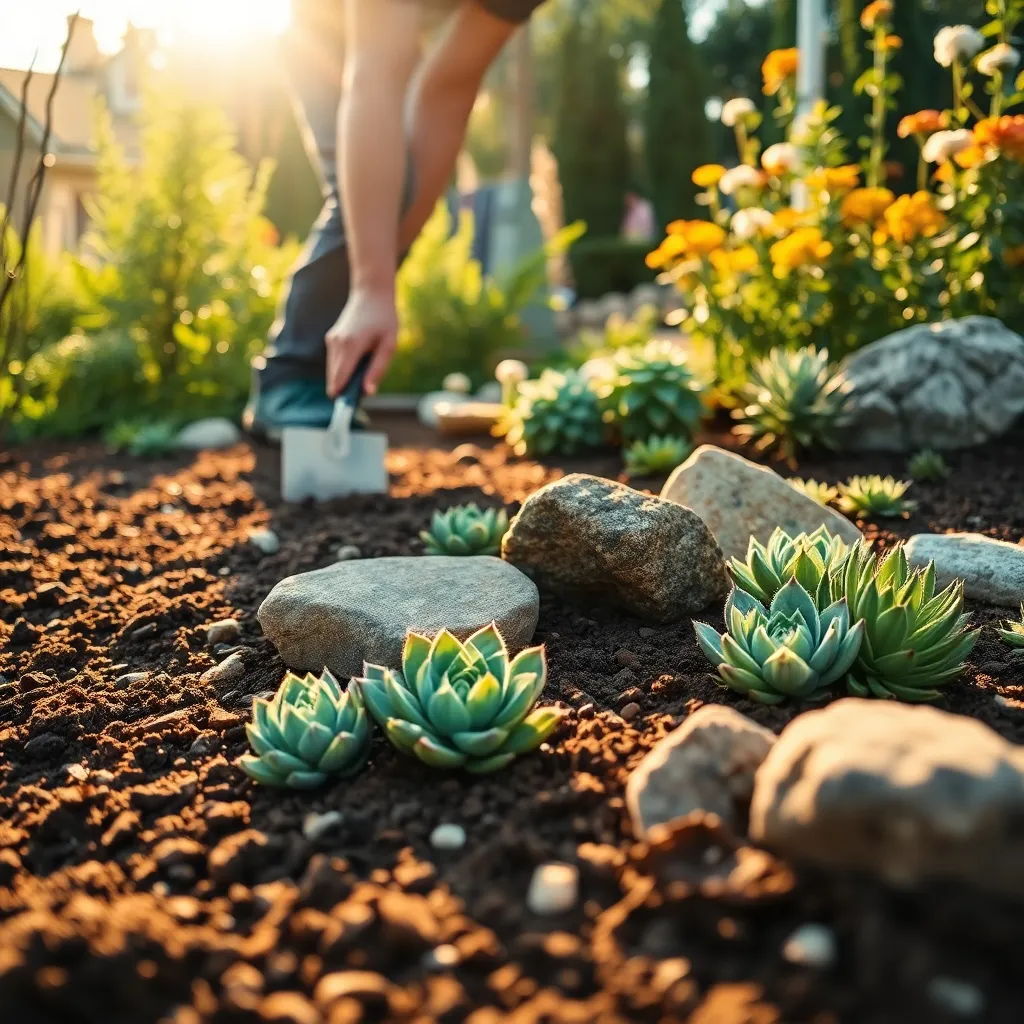
Creating a thriving rock garden starts with preparing the foundation soil to provide the right environment for your plants. Begin by removing any existing weeds and debris from the area where your rock garden will be established, as these can compete with your plants for nutrients and water.
It’s crucial to assess and modify the soil composition to ensure it drains well, which is essential for the types of plants typically grown in rock gardens. You can enhance drainage by mixing in coarse sand or fine gravel, which helps prevent waterlogging and root rot.
After improving drainage, enrich the soil with organic matter such as compost or well-rotted manure to provide nutrients that support healthy growth. This step is especially important if your native soil is poor or composed mainly of clay, as rock garden plants often thrive in leaner, well-drained soils.
Test the soil pH to determine if any adjustments are necessary; most rock garden plants prefer a slightly alkaline to neutral pH. If needed, you can amend acidic soils with lime to raise the pH, ensuring an optimal growing environment.
Installing Effective Drainage
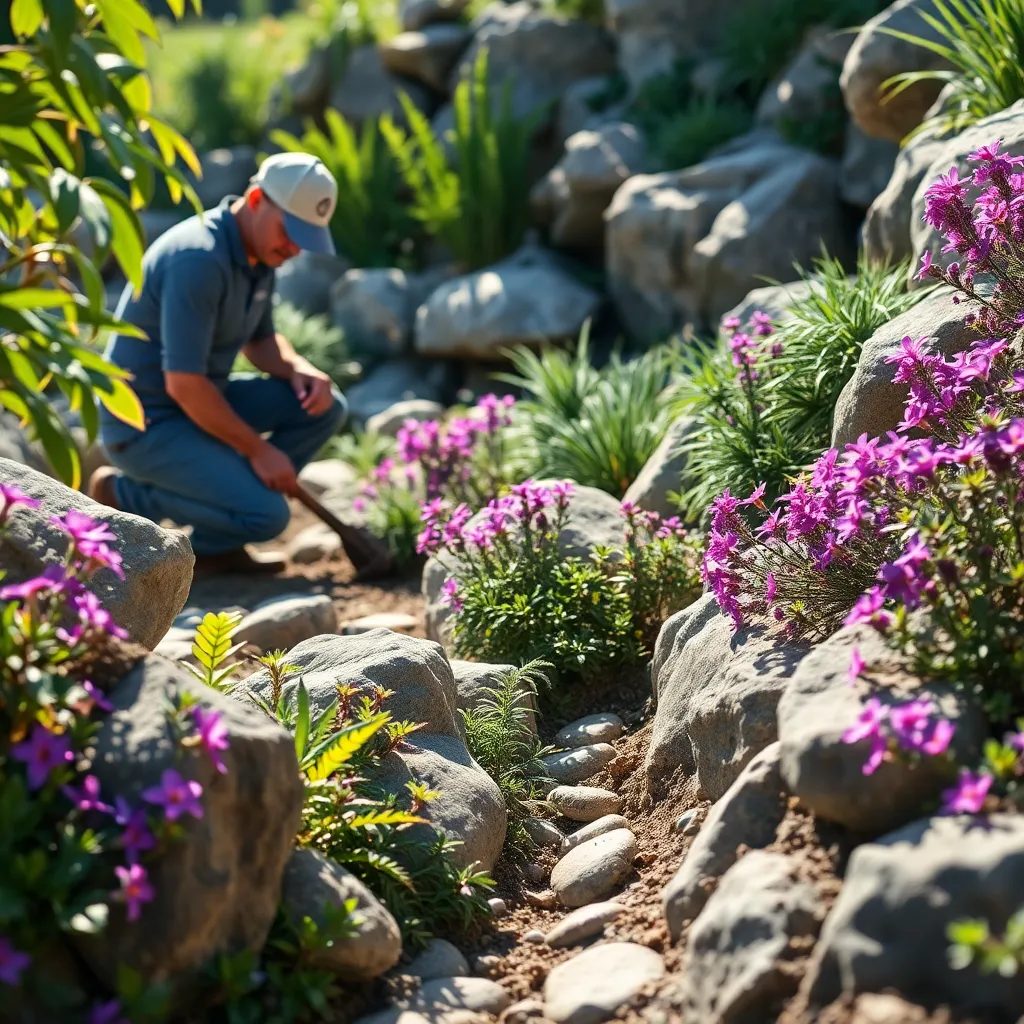
Proper drainage is crucial for a successful rock garden, ensuring that excess water doesn’t pool around your plants. Begin by assessing your garden’s natural slope and soil type, as these factors will guide your drainage solutions. Installing a layer of coarse gravel beneath the soil can significantly improve drainage, especially in clay-heavy areas where water tends to accumulate.
Incorporating organic matter such as compost can further enhance drainage by improving soil structure and aeration. Mixing sand with your soil is another effective strategy, especially if you’re dealing with heavy, compacted earth. This not only aids in water movement but also provides essential nutrients that promote healthy plant growth.
For gardeners dealing with extremely poor drainage, consider installing a French drain or a similar system. These structures help redirect water away from your garden, thus preventing root rot and other water-related issues. Ensure that the outlet is directed away from your rock garden to maintain the desired moisture levels for your plants.
When selecting plants, opt for species that thrive in well-drained conditions, such as succulents or alpine plants. These varieties are naturally adapted to rocky environments and will flourish with minimal water retention. Regularly check the soil moisture and adjust your watering schedule accordingly, as too much water can be just as harmful as too little.
Selecting Suitable Plants
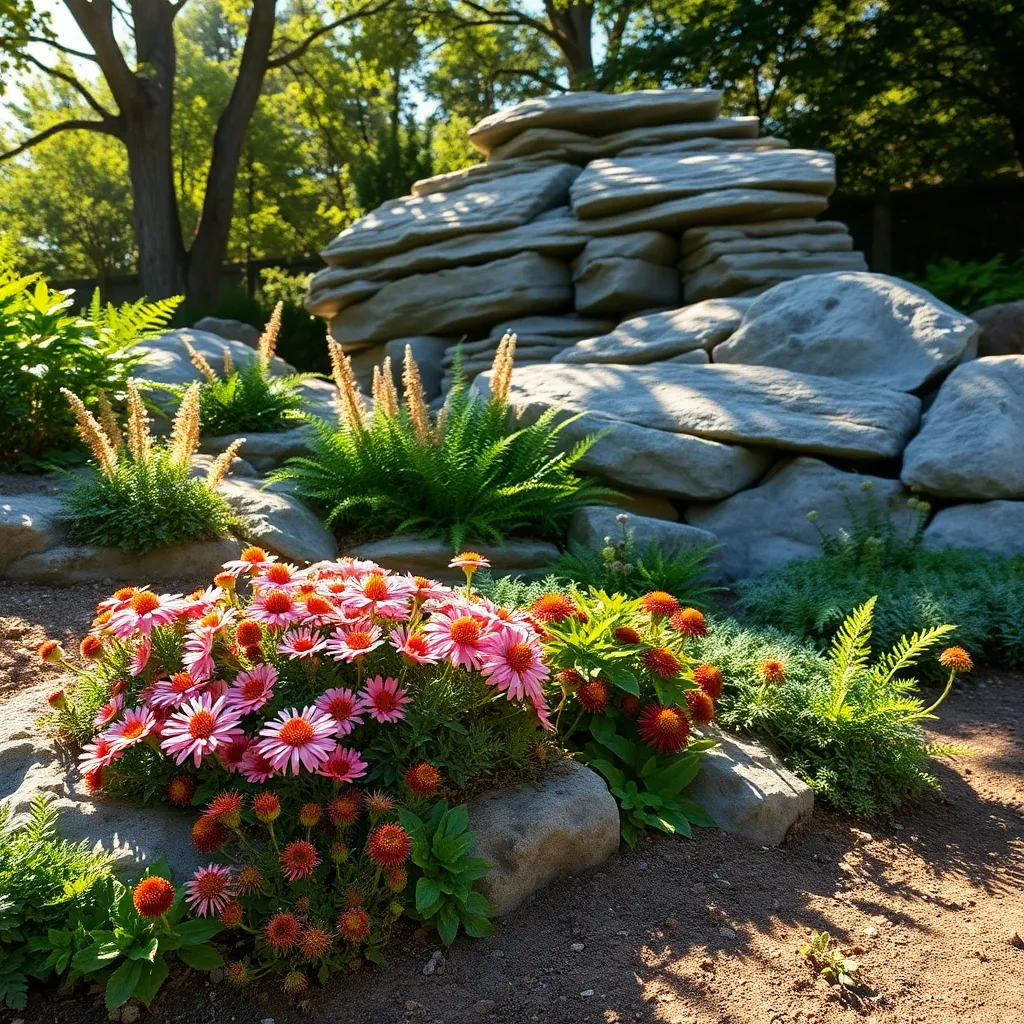
Choosing the right plants for your rock garden is essential to ensure it thrives and remains beautiful throughout the seasons. Begin by considering your local climate and soil conditions, as these factors heavily influence plant selection.
Opt for plants that are naturally suited to rocky, well-drained environments, such as sedums, thyme, and alpine asters. These plants are not only resilient but also require minimal maintenance, making them ideal for gardeners looking to create a low-effort landscape.
For beginners, start with hardy perennials that can tolerate varying weather conditions and are drought-resistant. Plants like rock cress and creeping phlox are excellent choices, offering vibrant blooms and adding texture to your garden.
Advanced gardeners might explore more unique species such as Lewisia or dwarf conifers, which can provide year-round interest and structure. When planting, ensure each species is spaced appropriately to allow for optimal growth and air circulation.
Planting Techniques for Success
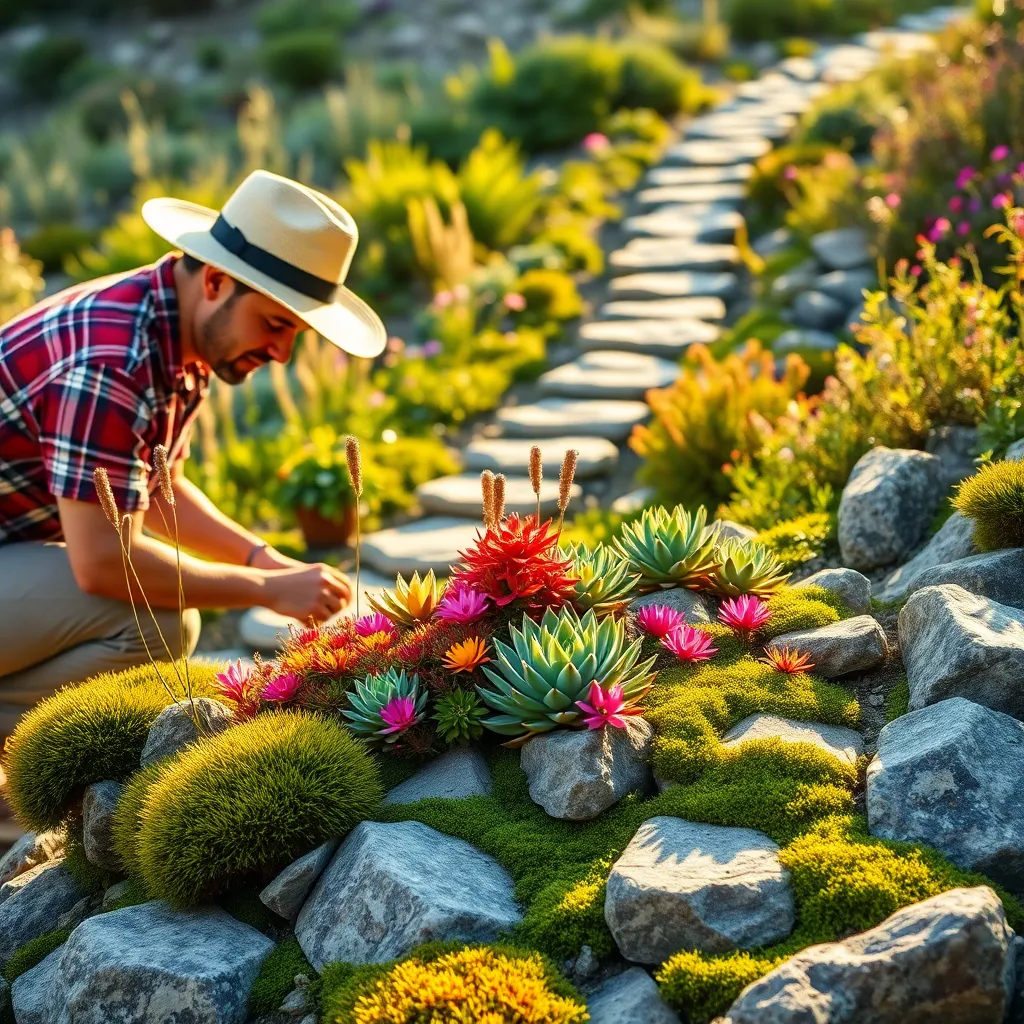
Incorporating effective planting techniques is crucial for the success of your rock garden. Start by ensuring that your soil is well-drained, as most rock garden plants prefer not to sit in waterlogged conditions. Improving soil drainage can be achieved by mixing gravel or coarse sand into your garden bed, which mimics the natural rocky environments these plants thrive in.
Positioning your plants correctly is another key step. When planting, make sure the crown of each plant is slightly above the soil line to prevent rot. Group plants with similar needs together, such as those requiring more sun or those needing more shade, to optimize their growing conditions.
Watering is an art in rock gardening, as too much or too little can harm your plants. Initially, water your new plants deeply to help them establish strong roots, but reduce frequency as they adapt. Monitor soil moisture regularly by checking the top inch of soil; it should be dry before you water again, ensuring you do not overwater.
Mulching is a beneficial technique that can aid in moisture retention and weed suppression. Use a thin layer of gravel or small stones as mulch, which suits the aesthetic of a rock garden while providing these benefits. This practice not only enhances the garden’s appearance but also supports the plant’s health by preventing erosion and maintaining soil temperature.
Incorporating Decorative Elements
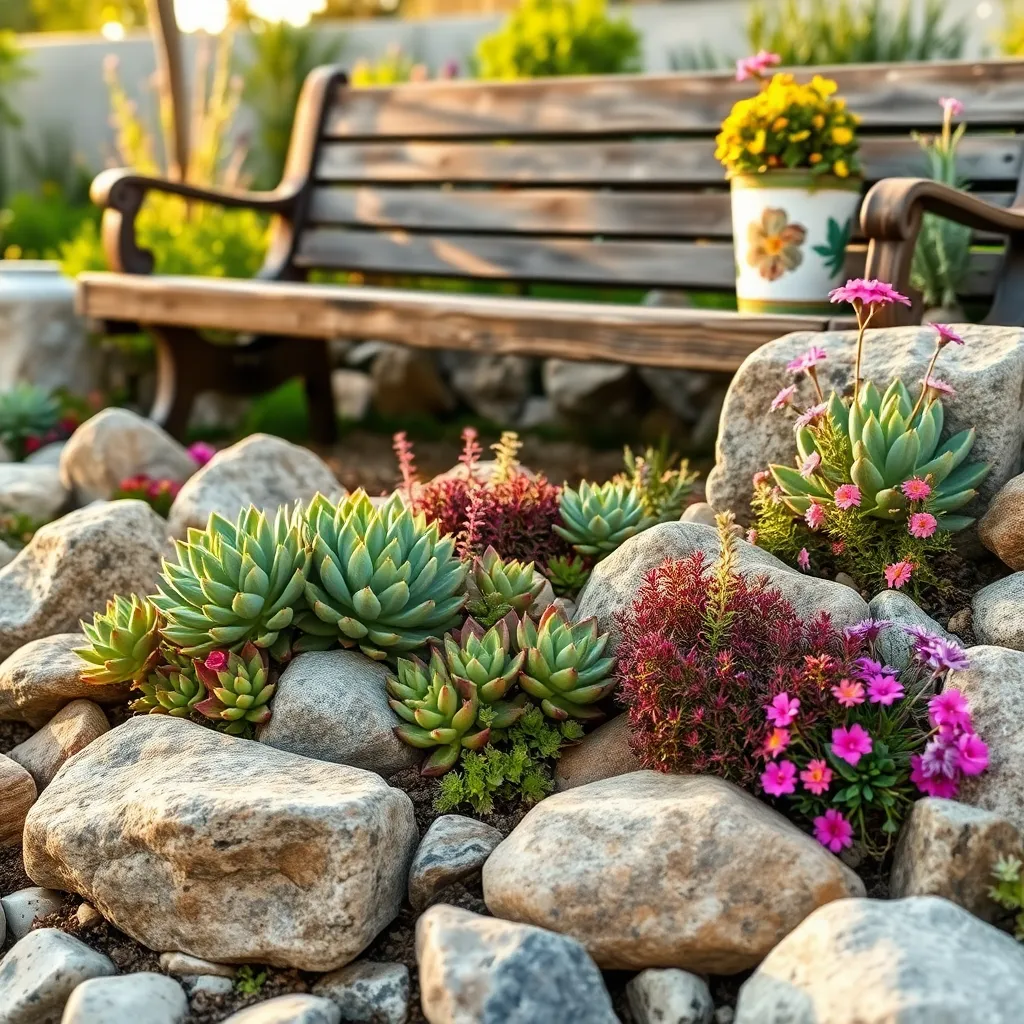
Incorporating decorative elements into your rock garden can elevate its aesthetic appeal and make it a unique focal point in your landscape. Start by selecting features that complement the natural beauty of the rocks and plants, such as a small water feature or a birdbath, which can also support local wildlife.
Adding sculptures or garden ornaments can create visual interest and personalize your space. Choose materials that withstand outdoor conditions, such as stone, metal, or weather-resistant ceramics, ensuring they harmonize with the overall theme of your garden.
Consider integrating pathways made from flagstone or gravel to enhance both aesthetic and functional aspects of your garden. Pathways not only guide visitors through the space but also help protect delicate plants from foot traffic. Positioning them thoughtfully can create a sense of discovery as guests explore your garden.
Lighting can transform your rock garden into a magical retreat during the evening hours. Use solar-powered lights to highlight key features without increasing your energy bill. Strategically placed lighting can accentuate the textures of rocks and foliage, adding depth and dimension to the garden.
Maintaining Your Rock Garden
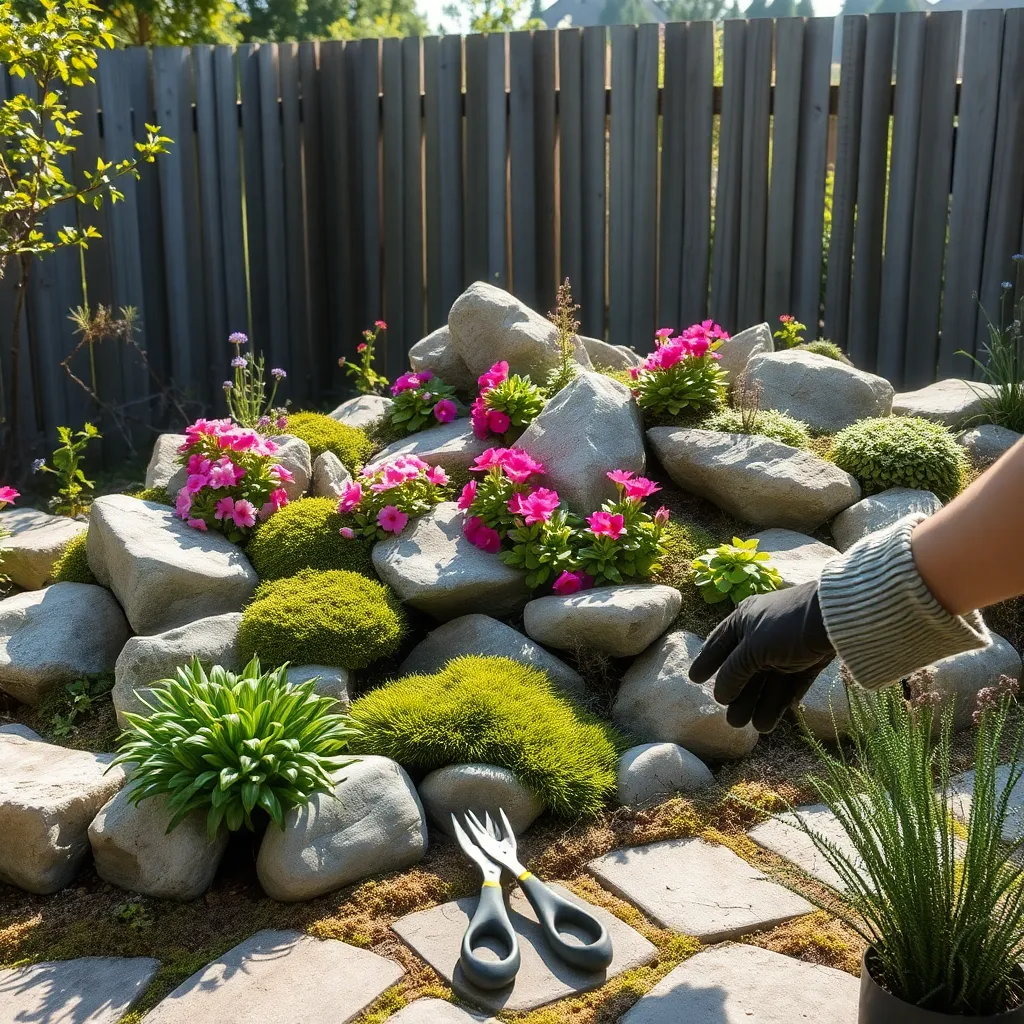
Maintaining your rock garden involves regular attention to ensure it remains a beautiful and thriving landscape feature. Begin by regularly removing weeds, as they can quickly take over and compete with your chosen plants for nutrients and space.
To keep your rock garden healthy, it’s important to monitor soil moisture levels. Most rock garden plants prefer well-draining soil, so ensure that water doesn’t accumulate and cause root rot by checking drainage after heavy rains.
Pruning is another essential maintenance task. Trim back any leggy or overgrown plants to encourage a more compact growth habit and remove any dead or diseased foliage to prevent the spread of disease.
Advanced gardeners may consider top-dressing their rock garden with a fresh layer of gravel or small stones each year. This not only enhances the garden’s aesthetics but also helps to suppress weeds and retain soil moisture.
Seasonal Care and Adjustments

As the seasons change, so should your approach to rock garden care. In spring, focus on refreshing the soil by adding a layer of compost to boost nutrients, preparing your plants for vigorous growth.
Keeping an eye on watering needs is crucial, especially during summer’s heat. To prevent water stress, ensure that your rock garden is well-drained, and consider using a timer system to regulate irrigation for consistent moisture levels.
Autumn is the perfect time to tidy up your rock garden by removing spent foliage and fallen leaves. By doing so, you can reduce the risk of pests and diseases overwintering, which helps maintain a healthier garden environment.
For winter, protect your more delicate rock garden plants from frost by covering them with a layer of mulch or a frost cloth. This simple step can act as insulation, preventing root damage and ensuring a robust emergence in the spring.
Fertilizing should be minimal in a rock garden, but a slow-release fertilizer can be applied in early spring. This technique provides a steady supply of nutrients throughout the growing season, supporting both plant and soil health.
Advanced gardeners might consider using a soil pH tester to optimize conditions for specific plants. Adjusting the soil’s alkalinity or acidity can significantly enhance growth, especially for plants that thrive in specific pH conditions like alpines and succulents.
Troubleshooting Common Issues
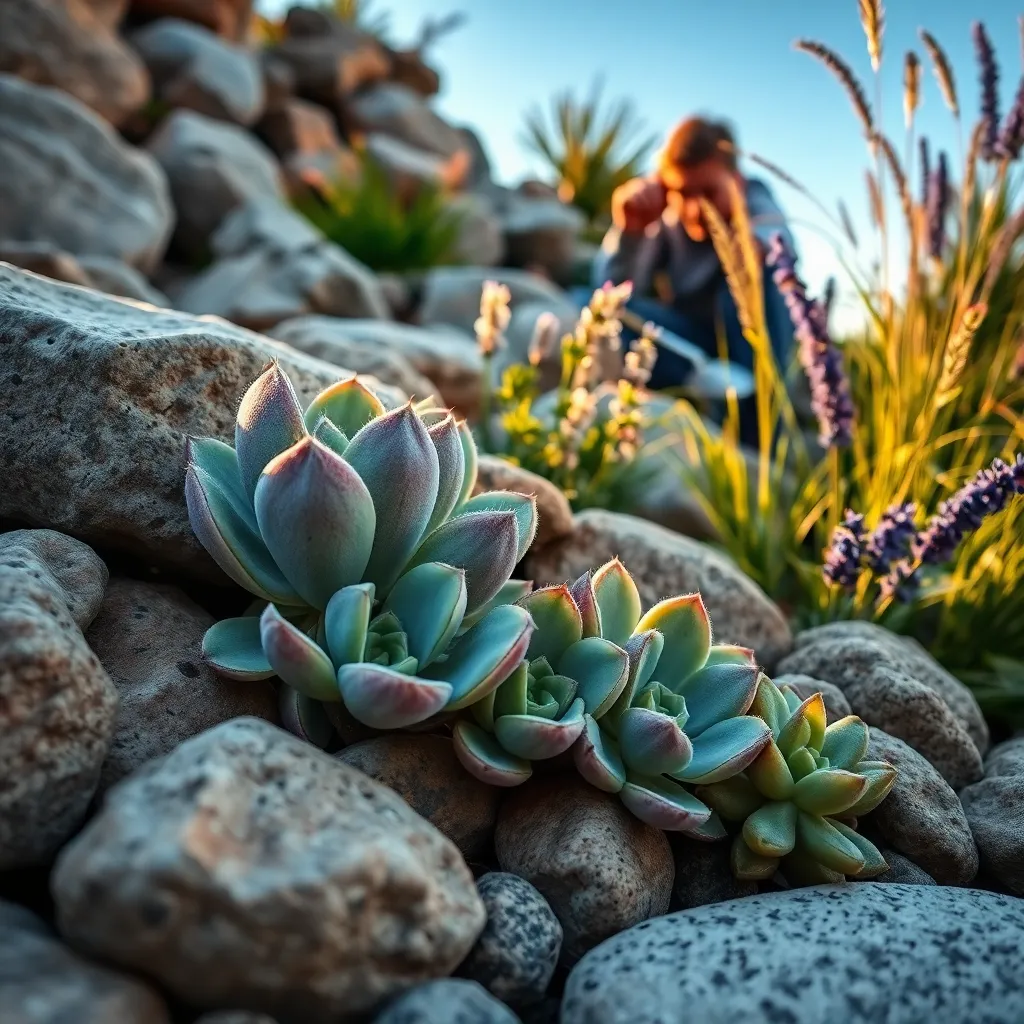
One common issue in rock gardens is poor drainage, which can lead to root rot. To address this, ensure your rock garden is built on a slight slope or incorporate a layer of coarse gravel beneath the soil for improved water movement.
Plants may struggle if they are not suited to the sun exposure in the garden. Observe your garden’s light patterns throughout the day, and choose plants that thrive in the available conditions, whether full sun, partial shade, or full shade.
Soil quality can significantly affect plant health in a rock garden. Use a well-draining soil mix, such as a combination of sand, loam, and small gravel, to mimic the natural rocky habitats these plants prefer.
If your plants appear stunted or discolored, nutrient deficiency might be the culprit. Apply a balanced, slow-release fertilizer in the spring and ensure it’s suitable for the specific needs of your chosen plants.
Advanced gardeners can consider the pH level of the soil for more precise care. Most rock garden plants prefer a slightly alkaline to neutral pH, so test your soil and amend it with lime if necessary to raise the pH.
Occasionally, weeds can become problematic in rock gardens, competing with your plants for nutrients and water. Regularly inspect your garden and remove weeds by hand, ensuring you pull them out by the roots to prevent regrowth.
Conclusion: Growing Success with These Plants
In the journey of building a rock-solid relationship, we explored 12 essential concepts designed to strengthen and nurture your bond. From the foundational importance of open communication and trust to the art of active listening and empathy, these pillars are crucial. We delved into the significance of shared goals and values, the power of compromise, and the joy of celebrating each other’s successes. We also highlighted the importance of maintaining individuality, understanding love languages, and the necessity of ongoing appreciation and gratitude. Finally, we touched on the courage to apologize, the wisdom of resolving conflicts constructively, and the magic of creating lasting memories together.
As your actionable next step, choose one concept to focus on this week—perhaps practicing active listening or expressing gratitude daily. Implement it wholeheartedly and observe the positive changes it brings.
Remember, successful relationships flourish with continuous effort and care. Bookmark this article now to revisit these key strategies and reinforce your commitment to nurturing your relationship. As you apply these principles, envision a future where your relationship thrives, growing stronger and more fulfilling with each passing day. Embrace this journey with optimism and know that you are equipped to create a lasting, loving connection.







